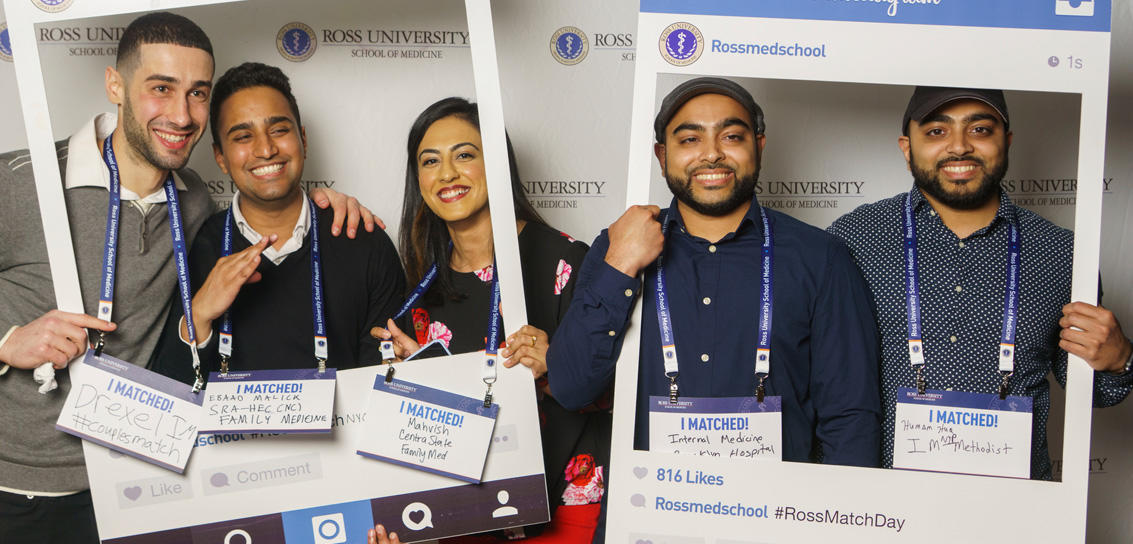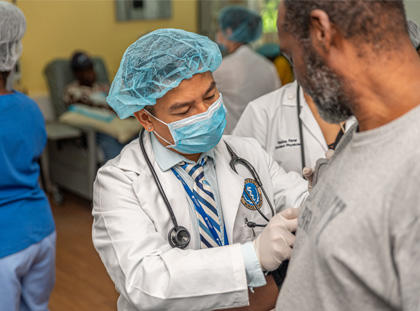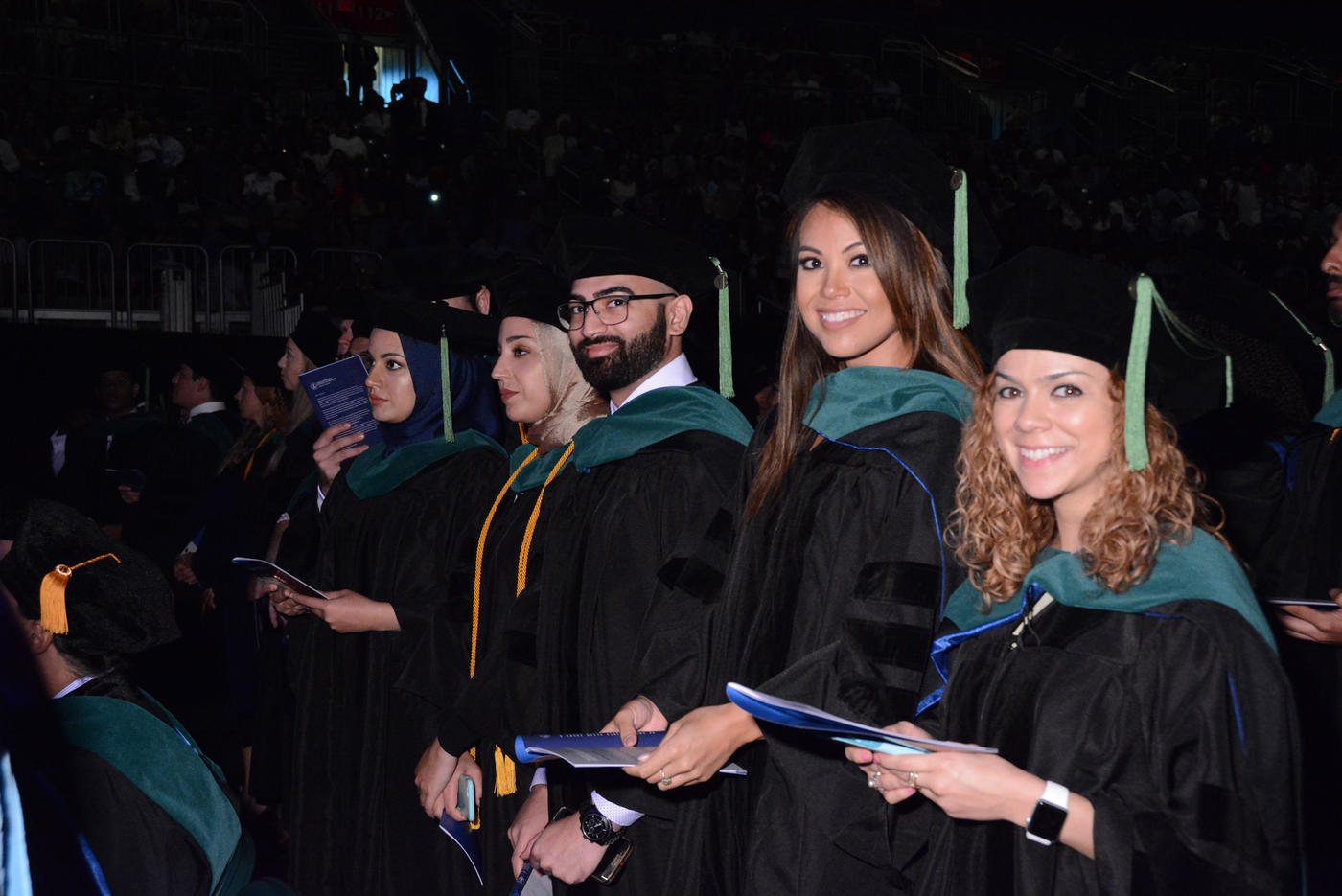For most students, Match Day is ultimately a cause for celebration. To reduce the stress of “The MATCH℠,” it’s important to learn about the complex system that governs residency placement. The better prepared you are for the process, the more likely you will receive good news on Match Day.
What Is The Match?
When students graduate from medical school, they earn a medical degree (MD). However, graduates can’t treat patients without supervision until they acquire additional training in a residency program. Residency training is one of the requirements for obtaining a medical license.
Most residency programs require doctors to train between three and seven years before they can be certified to practice a medical specialty. In the United States, The MATCH, managed by the National Resident Matching Program® (NRMP®), is the main system used to place graduating medical students into residency programs.
According to the Journal of the American Medical Association, residency programs were first introduced in the early 1900s. Competition for talented residents became so fierce that by the 1940s, hospitals began scouting medical students early in their training and offering jobs before other institutions could poach them. In 1952, the NRMP was created to make placing medical students in residency training a uniform process.
Get Started Today
You'll submit your completed Ross Med application online in our application portal.
How Does the Match Process Work?
The MATCH is a highly complex system that places medical students in residency programs based on students' and programs' preferences. The NRMP uses a complicated algorithm to rank the order of student’s residency preferences with available positions.
The MATCH process officially begins at the beginning of a medical student’s fourth year. However, students start their path to residency early in their medical training. Throughout medical school, students take part in clinical rotations in different areas of medicine, which helps them determine what specialty or specialties they’d like to pursue. The culmination of this training is The MATCH process, which includes:
- Submitting applications to residency programs
- Interviewing with program teams
- Creating a Rank Order List (ROL) of preferred programs
- Waiting while the NRMP calculates results and releases them on Match Day
The Match Application Process
The MATCH application process starts in September annually. Fourth-year medical school students submit applications to residency programs through the Electronic Residency Application Service® (ERAS®). Submission packages include:
- ERAS Application
- Student’s personal statement and photo
- Letters of recommendations
- Medical Student Performance Evaluation (MSPE)
- Medical School Transcript
- United States Medical Licensing Examination® (USMLE®)/COMLEX-USA transcript
Residents can submit multiple applications to programs to maximize their chances of acceptance. However, the Association of American Medical Colleges (AAMC) warns that submitting too many applications can create a financial burden on students and may not improve acceptance odds. The AAMC offers a free tool that helps students calculate the cost of residency applications.
Interview Season and the Ranking Process
Between October and February, residency programs invite promising applicants to interview their institutions. Applicants travel to hospitals, meet with program faculty, and tour the facilities.
Throughout the interview process, students begin drafting an ROL to rank their preferences of residency programs. Residency faculty do the same—ranking students to fill open residency slots.
The American Academy of Family Physicians offers the following guidelines for the ranking process:
- Ensure that your ROL includes your highly desired programs: Even if you have doubts that you’ll be accepted into the program, include it on the list. Ranking the desired program won't prevent you from earning a spot in a less-competitive program.
- Rank program preference accurately: As you’ll learn in the ranking system algorithm section below, NRMP bases a match on how you prioritize your choices.
- Don’t limit your list: Submitting a short ROL will not increase your chances of getting placed in one of your top schools, particularly if you seek placement in highly competitive specialties.
R3: The NRMP Match System
The NRMP finalizes the ranking lists in mid-February and feeds them into a system called Registration, Ranking, and Results (R3). The R3 system is a secure software program that contains the algorithm used in matching applicants with programs. The NRMP algorithm is a highly complex mathematical formula that was the basis for the 2012 Nobel Prize in Economic Sciences.
The NRMP algorithm favors an applicant's preferences over a residency program's student rankings. However, both parties must favorably rank each other for a match to occur. Additionally, residency programs must have available positions open for a match to take place.
The algorithm works like this:
- The R3 system first tries to match each applicant with their first-choice program. If successful, the student is “tentatively” matched. However, if higher ranked candidates match the institution's available positions, a candidate will lose the match.
- If a candidate's first choice isn't available or a higher-ranking candidate displaces a "tentative" student, R3 will attempt to place them with their second choice. If the second choice isn't available, R3 will move to the student's third choice. R3 will continue this process until it exhausts a student’s preference list.
- Once R3 finds a secure match, a "tentative" match becomes a "confirmed" match. The confirmed match is where the student will attend residency training. Once R3 completes the ranked-choice process, the Match is final and legally binding.
Match Week
Years of medical training and months of applications and interviews lead to Match Week. Held the third week of March annually, Match Week begins with students learning whether they are accepted into a residency program and ends with discovering where they will take their training. Here's how the week plays out:
Match Week Monday
At 10 a.m. ET, the NRMP informs all applicants whether they’ve been placed in a residency program. They don’t know where they’ll be training on Match Monday—only that they’ve been accepted to a program. In 2022, 94.2% of all applicants were placed into residency programs on Match Monday. These students learn on Match Day Friday where they will receive training.
Match Week Monday – Thursday: What Happens if You Don’t Match to a Residency Program?
Applicants who learn they haven't been placed in a residency program on Match Monday are eligible for the Supplemental Offer and Acceptance Program® (SOAP®), a supplemental matching process that takes place between Monday and Thursday afternoons. In the 2022 Match, 2,262 of the 39,205 positions were unfilled after the matching algorithm was processed.
During SOAP, students can apply to residency programs with unfilled positions. Click here for the 2023 NRMP SOAP Schedule and an outline for how it works. By the conclusion of SOAP, 93.3% of the available positions in SOAP had been filled, resulting in a 99.6% fill rate overall for all positions placed in the 2022 Match and SOAP.
Match Day
Match Week ends on the third Friday of March with Match Day. It is one of the most memorable and consequential days in the life of a medical student when they find out where they have placed at noon ET. This milestone is commemorated at almost every U.S. accredited medical school—as well as Ross University School of Medicine (RUSM).
A Successful Match Day Starts at RUSM
Each year, hundreds of RUSM graduates receive the news that they have matched at leading hospitals across the United States and Canada. RUSM achieved a 96% first-time residency attainment rate for 2021-2022* graduates. In 2022, RUSM graduates attained residencies in 24 specialties throughout 44 U.S. states and territories.
Get started on your path to Match Day by applying to RUSM.
*RUSM first-time residency attainment rates include additional residencies obtained outside of the NRMP Main Match and SOAP, which differs from the US methodology.
Related resources:




